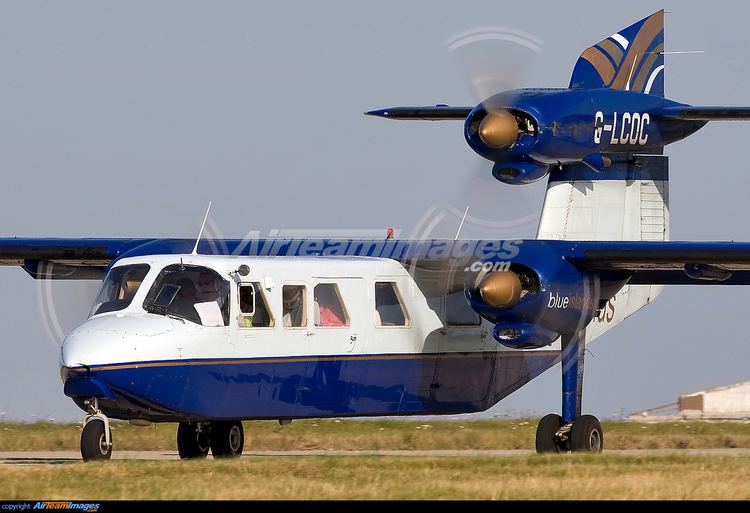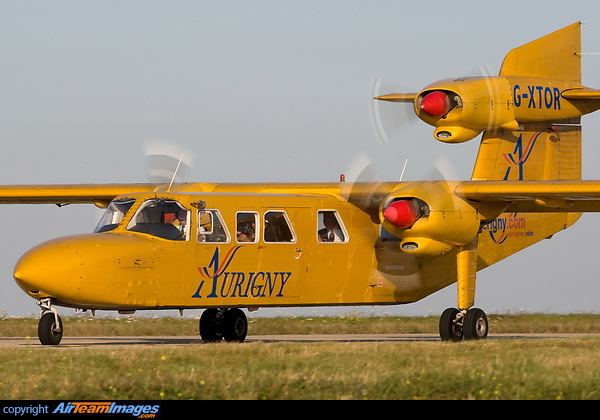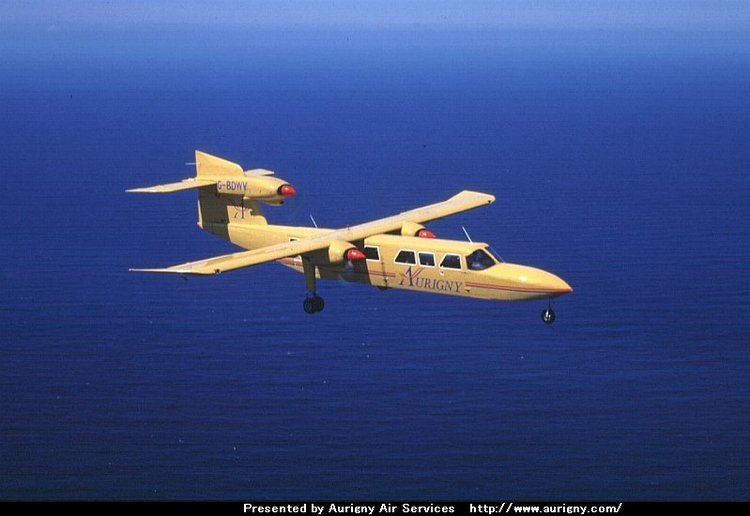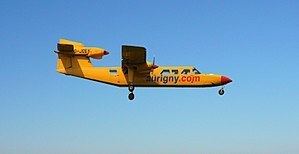Top speed 274 km/h Length 15 m First flight September 11, 1970 | Wingspan 16 m Engine type Lycoming O-540 | |
 | ||
Britten norman trislander bn 2a mk iii 2 unity airlines cockpit airclips full flight series
The Britten-Norman Trislander (more formally designated the BN-2A Mk III Trislander) is an 18-seat three-engined piston-powered civilian utility aircraft produced in the 1970s and early 1980s by Britten-Norman of Britain. These STOL capable aircraft were produced on the Isle of Wight. They were also produced in Romania, and delivered via Belgium to Britain for their certification.
Contents
- Britten norman trislander bn 2a mk iii 2 unity airlines cockpit airclips full flight series
- Roys britten norman trislander landing
- Design and development
- Operational history
- Variants
- Operators
- Accidents and incidents
- Specifications BN 2A Mk III 2
- References

Roys britten norman trislander landing
Design and development

Designed by John Britten and Desmond Norman, the Trislander is a further development of Britten-Norman's better-known Islander aircraft in order to give it a larger carrying capacity. In comparison with the Islander, the Trislander has a stretched fuselage, strengthened, fixed tricycle landing gear and a third engine on the fuselage centre line atop the fin. The Trislander has exceptional low speed handling characteristics, extended endurance, increased payload, low noise signature and economical operating costs. Capable of taking off from a 492 yards long landing strip, the Trislander can readily operate from unprepared surfaces.
Operational history

The prototype of the Trislander, which was constructed from the original second Islander prototype, first flew on 11 September 1970. The type entered service with the Guernsey-based Aurigny in July 1971. Initial production ceased in 1982 after 73 had been sold and delivered, with a further seven Trislanders unsold, when Pilatus Britten Norman sold a manufacturing license to the International Aviation Corporation (IAC) of Florida. It was planned for IAC to build 12 Trislanders (to be known as Tri-Commutairs) from parts kits supplied by Britten-Norman before undertaking full production, but these plans came to nothing. As of January 2008, Britten-Norman was preparing a second production run of the Trislander.
Variants
Note: Aurigny has fitted all Trislanders in its fleet with 3 blade propellers (Hartzell HC-C3YR-2UF/FC8468-8R) on the front two engines so as to increase maximum take-off weight.
Operators

Accidents and incidents

On 15 December 2008, a Trislander operated by LAP in Puerto Rico, the first crash since 2005. The aircraft crashed into the sea somewhere near the Turks and Caicos, shortly after the distress call. A spokesman for the Asociación Nacional de Pilotos reported that the pilot had his licence suspended in October 2006.
On 5 July 2009 in New Zealand, a Trislander belonging to Great Barrier Airlines lost its starboard side prop six minutes into a flight from Great Barrier Island to Auckland city. The prop sheared off and impacted the fuselage, prompting a successful emergency landing. While there were injuries, no deaths were reported. The accident was caused by undetected corrosion of the propeller flange which led to its eventual failure.
Specifications (BN-2A Mk III-2)
Data from Jane's All The World's Aircraft 1976–77
General characteristics
Performance
